
Draw a diagram of Amoeba, Sycon, Euglena, Balanoglossus, Planaria.
Answer
511.2k+ views
Hint: Amoeba and Euglena belong to the kingdom Protista while Sycon, Balanoglossus, and Planaria belong to the kingdom Animalia.
Complete answer:
Amoeba: An amoeba, is a term generally used to describe a single-celled eukaryotic organism belonging to the kingdom Protista that has no definite shape and that moves by means of pseudopodia. Pseudopodia or pseudopods also known as the 'false feet' are temporary projections of the cell.
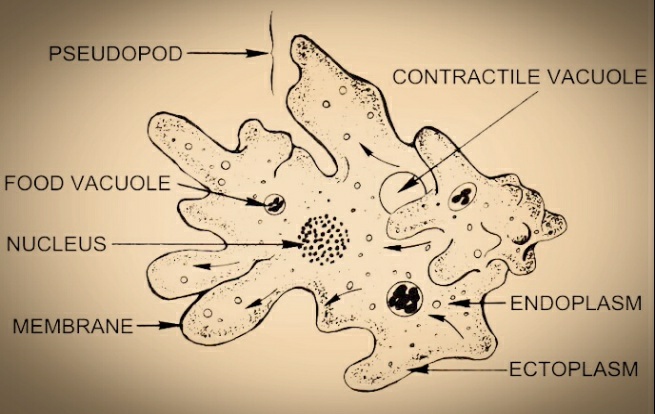
Sycon: Sycon or Scypha is a marine sessile, cylindrical sponge, and remains permanently attached to submerged rocks and other solid substrata. Each cylindrical branch has an opening at its free end called the osculum.
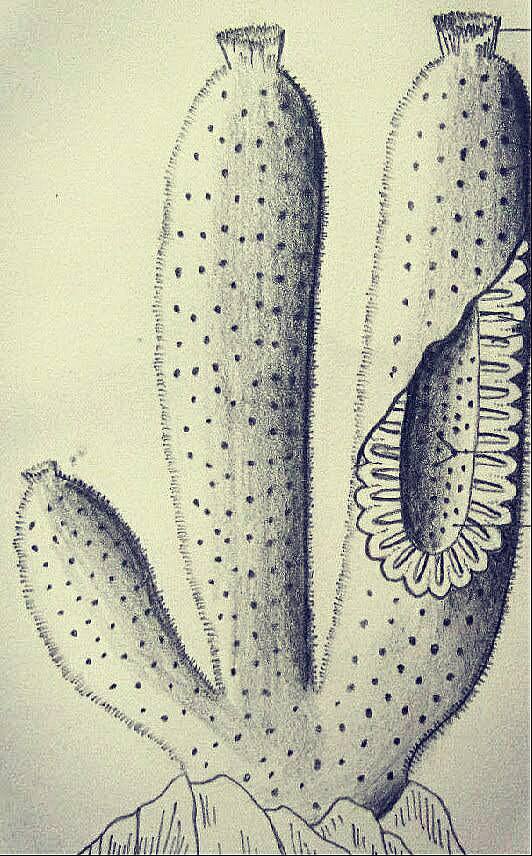
Euglena: Euglena, is single-celled flagellated microorganisms that show the characteristics of both plant and animal. Found worldwide, Euglena lives in fresh and brackish water rich in organic matter and can also be found in moist soils.
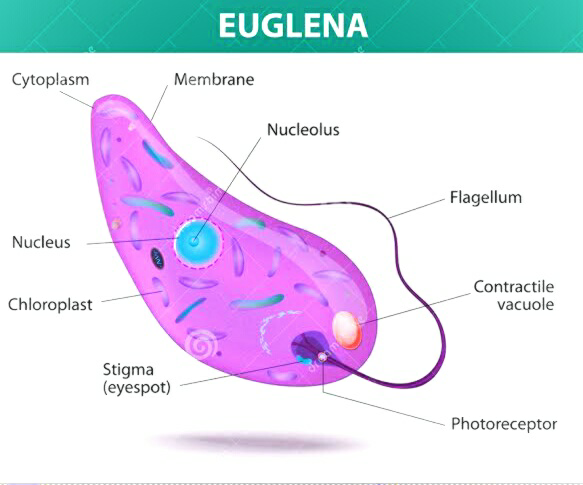
Balanoglossus: It is a worm-like cylindrical Protochordate animal belonging to the phylum Chordata. It has a muscular body that is divided into Proboscis, collar, and trunk. The body is covered by ciliated epidermis. It lives around water bodies by making burrows in the sand with the help of proboscis and collar.
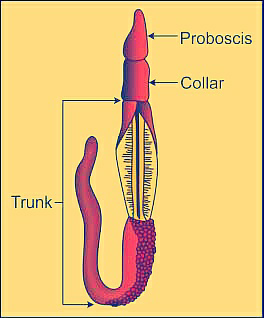
Planaria: Planaria belong to the phylum Platyhelminthes under the kingdom of Animalia. They are found both in saltwater and freshwater ponds and rivers. Planaria exhibit an extraordinary ability to regenerate its lost body parts due to an injury. Some species of planaria have two or more eye-spots to detect the intensity of light inside water bodies. These are called ocelli.
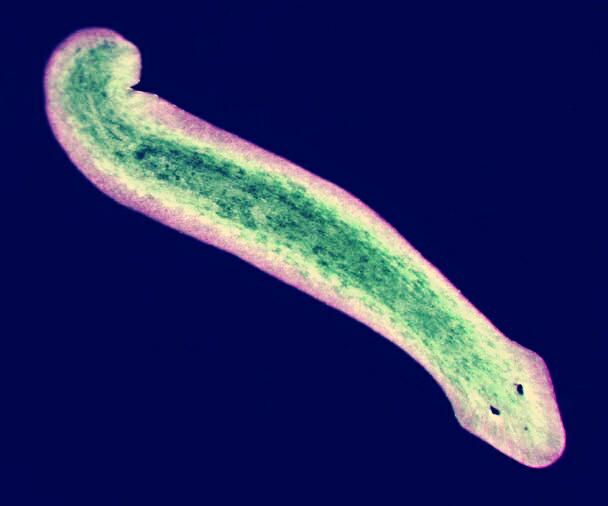
Note:
-The cytoplasm of an amoeba contains the organelles and is enclosed by a cell membrane. An amoeba uses a process called phagocytosis to obtain food with the help of pseudopodia.
-Sycon is characterized by the presence of the 'Water canal system'. It helps in respiration, nutrition, and excretion. Its skeleton system is made up of calcareous cells called 'spicules'.
-Euglena is characterized by the presence of 'pyrenoid bodies' in their chloroplast that is meant for photosynthesis.
-Balanoglossus consist of Proboscis that is a club-shaped structure. It lies at the anterior end of the body.
Complete answer:
Amoeba: An amoeba, is a term generally used to describe a single-celled eukaryotic organism belonging to the kingdom Protista that has no definite shape and that moves by means of pseudopodia. Pseudopodia or pseudopods also known as the 'false feet' are temporary projections of the cell.

Sycon: Sycon or Scypha is a marine sessile, cylindrical sponge, and remains permanently attached to submerged rocks and other solid substrata. Each cylindrical branch has an opening at its free end called the osculum.

Euglena: Euglena, is single-celled flagellated microorganisms that show the characteristics of both plant and animal. Found worldwide, Euglena lives in fresh and brackish water rich in organic matter and can also be found in moist soils.

Balanoglossus: It is a worm-like cylindrical Protochordate animal belonging to the phylum Chordata. It has a muscular body that is divided into Proboscis, collar, and trunk. The body is covered by ciliated epidermis. It lives around water bodies by making burrows in the sand with the help of proboscis and collar.

Planaria: Planaria belong to the phylum Platyhelminthes under the kingdom of Animalia. They are found both in saltwater and freshwater ponds and rivers. Planaria exhibit an extraordinary ability to regenerate its lost body parts due to an injury. Some species of planaria have two or more eye-spots to detect the intensity of light inside water bodies. These are called ocelli.

Note:
-The cytoplasm of an amoeba contains the organelles and is enclosed by a cell membrane. An amoeba uses a process called phagocytosis to obtain food with the help of pseudopodia.
-Sycon is characterized by the presence of the 'Water canal system'. It helps in respiration, nutrition, and excretion. Its skeleton system is made up of calcareous cells called 'spicules'.
-Euglena is characterized by the presence of 'pyrenoid bodies' in their chloroplast that is meant for photosynthesis.
-Balanoglossus consist of Proboscis that is a club-shaped structure. It lies at the anterior end of the body.
Latest Vedantu courses for you
Grade 9 | CBSE | SCHOOL | English
Vedantu 9 CBSE Pro Course - (2025-26)
School Full course for CBSE students
₹37,300 per year
Recently Updated Pages
Master Class 11 Economics: Engaging Questions & Answers for Success

Master Class 11 Business Studies: Engaging Questions & Answers for Success

Master Class 11 Accountancy: Engaging Questions & Answers for Success

Master Class 11 English: Engaging Questions & Answers for Success

Master Class 11 Computer Science: Engaging Questions & Answers for Success

Master Class 11 Maths: Engaging Questions & Answers for Success

Trending doubts
Which one is a true fish A Jellyfish B Starfish C Dogfish class 11 biology CBSE

State and prove Bernoullis theorem class 11 physics CBSE

1 ton equals to A 100 kg B 1000 kg C 10 kg D 10000 class 11 physics CBSE

In which part of the body the blood is purified oxygenation class 11 biology CBSE

One Metric ton is equal to kg A 10000 B 1000 C 100 class 11 physics CBSE

Difference Between Prokaryotic Cells and Eukaryotic Cells




